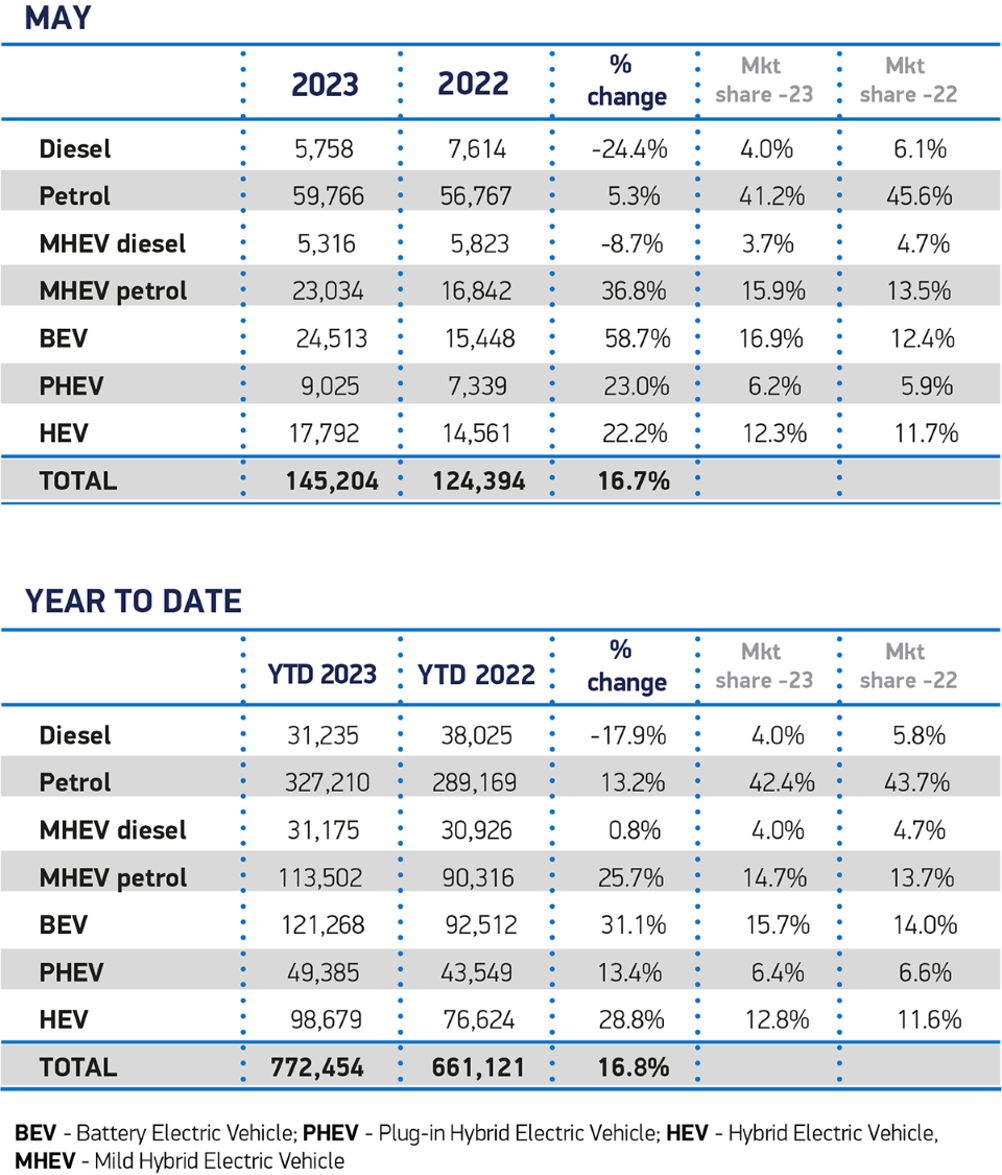The performance marks 10 consecutive months of growth and longest uninterrupted period of expansion for eight years. Despite the uplift, registrations remain 21 per cent below pre-pandemic 2019 levels
Large fleet registrations were up by 36.9 per cent to 76,207 units but registrations to private buyers fell slightly by 0.5 per cent to 65,932 cars, and smaller business fleets registered 3,065 units, a year-on-year rise of 22.5 per cent.
Petrol-powered cars remain Britain’s best sellers, accounting for 57.1 per cent of all registrations. Alternatively powered vehicles, however, continue to make up an ever-larger share of the market, with plug-in hybrids (PHEVs) rising 23.0 per cent to reach a 6.2 per cent market share and hybrids (HEVs) growing 22.2 per cent to comprise 12.3 per cent of all registrations. May saw battery electric vehicles consolidate their position as the UK’s second most popular powertrain. A further 24,513 joined the road during the month, up 58.7 per cent on May last year to secure a 16.9 per cent market share.

Of the new cars registered in May, lower mediums, superminis and dual purpose were the most popular, comprising 86.3 per cent of the market. There are now zero emission options available in every single segment of the market. With over 80 models available, these new BEVs have an average battery range of 236 miles.
From January the Zero Emission Vehicle Mandate is expected to be in force, which will set a minimum quota for new battery electric vehicle registrations for every brand. SMMT said the models and volumes will be available but ensuring market demand will require action from every stakeholder. A supportive fiscal framework, simplified planning processes, faster grid connections and the provision of a nationwide network of reliable, affordable and sustainable charge points will give drivers considering the switch the confidence to purchase.
In a statement, Mike Hawes, SMMT chief executive, said: “After the difficult, Covid-constrained supply issues of the last few years, it’s good to see the new car market maintain its upward trend and the fact that growth is, increasingly, green growth is hugely encouraging. Transforming the market nationwide, however, and at an even greater pace means we must increase demand and help any reticent driver overcome any concerns about electric vehicles. This will require every stakeholder – industry, government, chargepoint operators and energy companies – to play their part, accelerating investment to drive decarbonisation.”
“As choice and availability drive momentum in the EV market, there will need to be intelligent decisions about where charging points are deployed to sustain progress,” commented Greg Hanson, VP of EMEA & LATAM of Informatica. “By bringing together disparate data sources and IoT-enabled data from vehicles, road infrastructure such as highways and charging points, a single trusted view of EV demand can be created.
Hanson continued: “This view means that energy flows and driving patterns can be analysed to forecast EV charging demands and carefully plan infrastructure to ensure supply matches demand."











Guest blog: exploring opportunities for hydrogen combustion engines
"We wouldn't need to pillage the environment for the rare metals for batteries, magnets, or catalisers". Batteries don't use rare...